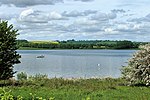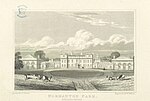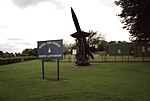Edith Weston

Edith Weston is a village and civil parish in the county of Rutland in the East Midlands of England. The population of the civil parish was 1,042 at the 2001 census, including Normanton and increasing to 1,359 at the 2011 census. It is on the south-eastern shore of Rutland Water and is home of the main sailing club and a fishing lodge. The village is named after Edith of Wessex (1029–1075), the queen of Edward the Confessor and sister of Harold Godwinson. The Grade I listed church is dedicated to St Mary the Virgin and includes stained glass by Paul Woodroffe and Hugh Arnold; the organ is by Samuel Green of London and dated 1787. The village pub is the Wheatsheaf on King Edward's Way. St George's Barracks is located to the south and east of the village; this was previously RAF North Luffenham. In August 2007 16th Regiment Royal Artillery, equipped with the Rapier FSC, moved here from Woolwich. Edith Weston features in the Alan Sillitoe novel Down From the Hill, with the main character stopping off in the Wheatsheaf for a shandy.
Excerpt from the Wikipedia article Edith Weston (License: CC BY-SA 3.0, Authors, Images).Edith Weston
St Mary's Close,
Geographical coordinates (GPS) Address Nearby Places Show on map
Geographical coordinates (GPS)
| Latitude | Longitude |
|---|---|
| N 52.64 ° | E -0.63 ° |
Address
St Mary's Close
St Mary's Close
LE15 8HF , Edith Weston
England, United Kingdom
Open on Google Maps










